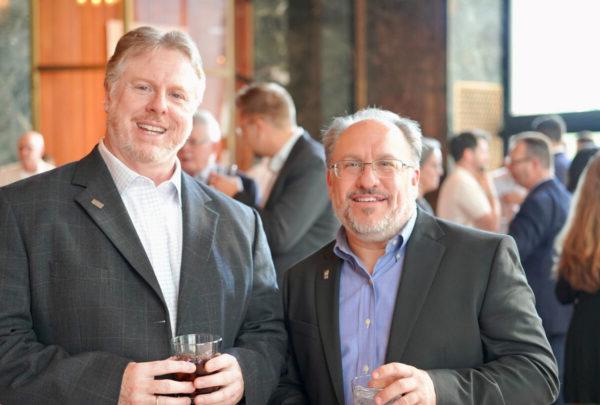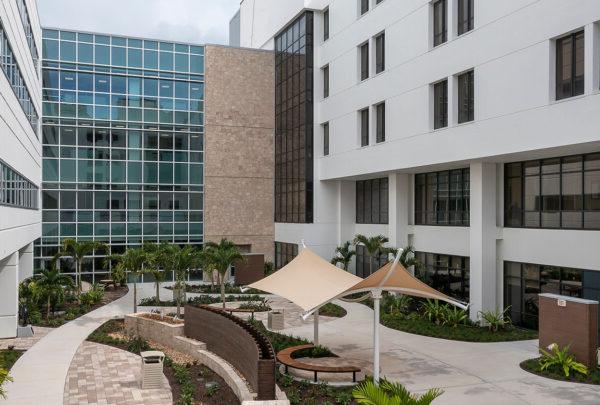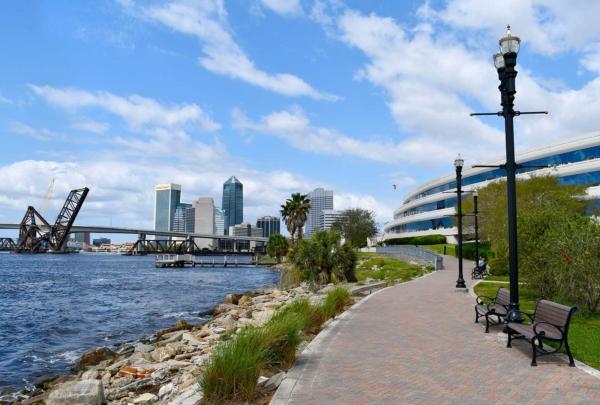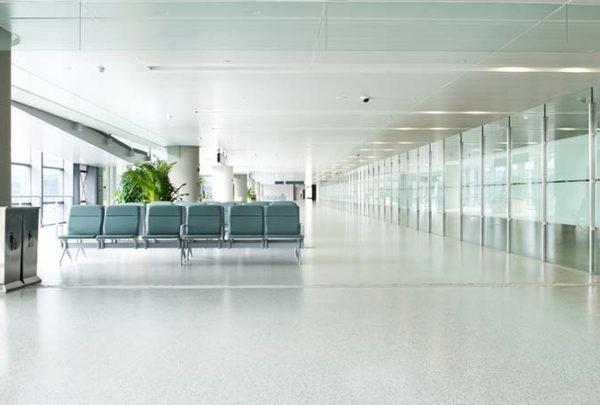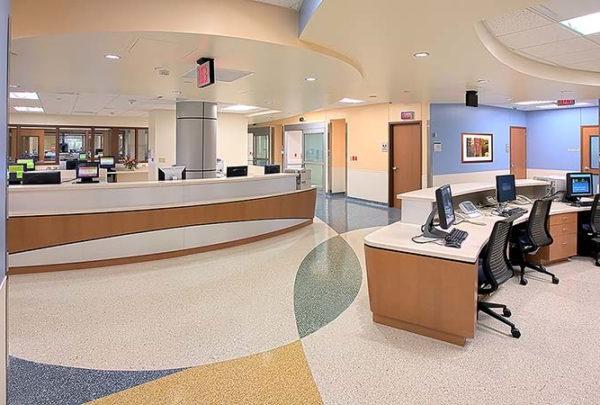Many buildings today are clad with aluminum skins, crisp metal panels in both simple and complex shapes, with limitless color options. Aluminum doesn’t rust, and its light weight makes it easy to install.
Additionally, it has a competitive price point compared with other claddings and is readily available from multiple manufacturers. Being the metal cladding of choice by both designers and contractors, aluminum controls the lion’s share of the metal cladding market. It is an economic material with a proven record of success. To install it in a code-compliant manner, however, requires understanding the various types of aluminum skin and their restrictions.
There are two basic types of aluminum panels: solid plate and metal composite material (MCM). Solid plate is exactly what it sounds like – a single thickness of aluminum plate, no fillers or preservatives, just simple, solid metal. It comes in a variety of thicknesses. I’ve used it at thicknesses from 0.062 inches (1/16”) to 0.125 inches (1/8”). MCM is composed of two very thin sheets of aluminum laminated to a polyethylene plastic core. The laminated metal on both faces is approximately 0.019 inches (1/64”) thick and the plastic core is approximately 0.125 inches (1/8”) thick, for an overall panel thickness around 0.16 inches (5/32”).
For solid plate, the building code has very few restrictions to its use. Table 1404.2 requires a minimum thickness of 0.019 inches (1/64”). I don’t know of any aluminum material currently on the market that doesn’t meet or exceed this minimal thickness. Other than the thickness requirement, there are no other code restrictions for solid plate. Another benefit is the durability of the solid plate. Depending on the thickness, solid plate can take substantial abuse from wind, impact, and basic vandalism with minimal damage. It is durable, and the finish may be able to be repaired without replacing the panel. One simple downside to using aluminum plate is that it really wants to stay in a flat plane. Bending it in one direction along a straight fold is what the material likes. To get complex geometries or curves requires careful cutting and/or welding. It can be done, but not easily and at a higher price.
The building code has a specific section for MCM in Chapter 14: Section 1406, METAL COMPOSITE MATERIALS (MCM). In simple terms, the code allows MCM to be installed on buildings less than 40 feet in height with very few restrictions. Once the panels are installed at a height above 40 feet from grade, the requirements vary depending on the version of the code being used. In both the 2018 and the 2021 code, an NFPA 285 assembly test is required for installations above 40 feet from grade. However, the 2018 edition has several exceptions under section 1406.11 that provide an escape from the NFPA 285 requirement. [For an explanation on NFPA 285 and issues with compliance to the tested assemblies, please refer to What Is NFPA 285? and The Loophole in NFPA 285.] In the 2021 edition, those exceptions have all been removed, and compliance with NFPA 285 is mandatory. A tested NFPA 285 assembly is required because MCM panels have a flammable polyethylene plastic core. Even the panels marketed as Fire Resistant are still flammable under certain circumstances. The exceptions have likely been removed from the 2021 edition due to the Grenfell Towers fire and other façade fires around the globe. The installed height is the most critical factor in using MCM. Using above 40 feet from grade requires careful compliance with NFPA 285 and the specific details and limitations associated with the tested assembly. Below 40 feet from grade, there are fewer restrictions from the code standpoint.
Another concern with MCM is the softness of the material. Because it is made with a very thin aluminum skin and a plastic core, it is susceptible to damage from wind-blown debris or general vandalism if installed at a height accessible to pedestrians. Consideration should be given to where it is installed near grade and if it could be accessed/damaged by the public.
On the plus side, it is easily formed into complex shapes and geometries. I have detailed it with compound curves and folds and diamond shapes that can’t be matched by the solid plate material. It’s also lightweight, so large panels are easily handled by one or two installers.
Additionally, some manufacturers are coming out with MCM panels that have honeycombed aluminum cores. Vitrabond – G2 manufactured by Fairview Architectural is one such panel. These panels are non-combustible and would eliminate the need for an NFPA 285 assembly. While the 2018 IBC and 2021 IBC do not specifically address these newer panels, I would expect the code to require compliance under the solid plate material section instead of the MCM section. These newer panels are as lightweight as the MCM and similar in installation. The downside is they don’t like to be curved. The aluminum honeycomb core is not as malleable as the plastic core. It makes the panel rigid, like the plate material.
In summary, I offer the following thoughts for the two materials.
Solid aluminum plate
- Pros
- Non-combustible, so no NFPA 285 assembly is required
- Minimal requirements as a cladding material for code compliance
- A hard, durable material
- Minor damage can be repaired
- Cons
- Restricted to simple, flat shapes for each panel
MCM
- Pros
- Lightweight
- Available in complex shapes and geometries
- Additional products are coming on the market that eliminate the combustibility and remove the requirement for NFPA 285 compliance (pending)
- Cons
- 2021 IBC requires compliance with an NFPA 285 assembly for installations over 40 feet above grade
- 2018 IBC requires compliance with an NFPA 285 assembly for installation over 40 feet above grade, or compliance with one of the exceptions in section 1406.11
- Soft material that is susceptible to damage










